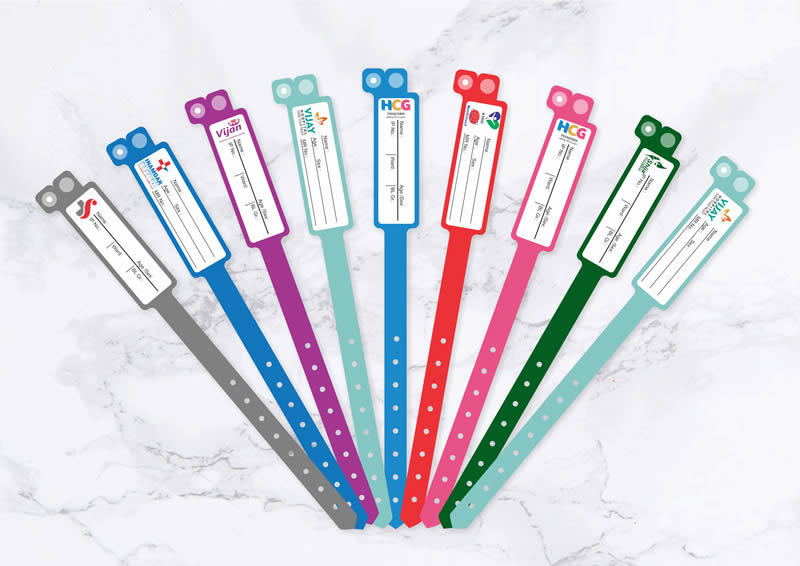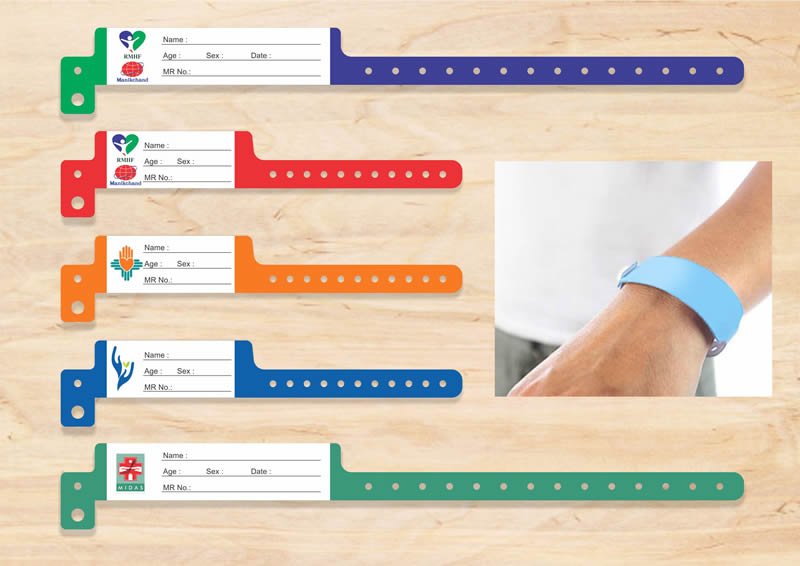Best Practices for Introducing a Patient Identification Band System in Your Clinic
Best Practices for Introducing a Patient Identification Band System in Your Clinic
Blog Article
Discovering the Numerous Sorts Of Patient Identification Band Utilized in Medical Facilities
In the elaborate world of health care, the critical function of Patient Identification bands usually goes undetected. These bands, differing from simple paper wristbands to innovative RFID bands, develop the backbone of Patient security procedures, ensuring precision in Patient Identification.
Recognizing the Relevance of Patient Identification Bands
While they might appear like mere accessories, Patient Identification bands play an important role in clinical centers. These bands act as a crucial device for confirming Patient identity, protecting against medical errors connected to misidentification. The bands typically display necessary details such as the Patient's name, age, blood type, and any recognized allergic reactions. They permit healthcare experts to swiftly access this critical info, therefore facilitating prompt and accurate medical treatment. Patient Identification bands also aid in improving administrative tasks, making sure precise record-keeping and invoicing. In spite of their simpleness, these bands symbolize the principle of Patient security, a foundation of top quality healthcare. Without them, the risk of medical mistakes, and as a result, Patient injury, could dramatically enhance.
Traditional Paper Wristbands: Their Usage and Limitations
Typical paper wristbands have actually been a staple in Patient Identification throughout various clinical centers. While their use is prevalent, they harbor certain constraints that may impact their performance in Patient management. This area will certainly focus on the scope of their application and the inherent downsides connected with their usage.
Paper Wristbands: Use Extent
In the world of Patient Identification, paper wristbands have long held a critical duty. These bands are generally utilized in outpatient settings, where the Patient's remain is momentary. Regardless of advancements in technology, the humble paper wristband stays a trusted and cost-effective service for Patient Identification in various healthcare scenarios.
Limitations of Paper Wristbands
In spite of their prevalent usage, paper wristbands are not without their downsides. In addition, paper wristbands typically do not have the technological abilities of even more modern options, such as barcoding or RFID chips, restricting their performance to just presenting created details. Paper wristbands can trigger discomfort or skin irritation to some patients, especially when used for extensive periods.
Barcoded Wristbands: Developments in Patient Identification
While Patient Identification has actually long been an important aspect of medical care, the development of barcoded wristbands symbolizes a substantial jump onward. These bands take advantage of the simpleness of barcoding innovation, enabling for Patient details to be quickly scanned and accessed. They boost the rate and precision of Patient Identification, decreasing the danger of medical errors related to misidentification.
Superhigh Frequency Identification (RFID) Bands: an Action In The Direction Of Futuristic Medical Care
The development of Patient Identification bands has brought about the development of Radio Frequency Identification (RFID) Bands (patient identification band). These innovative gadgets present key advantages for health care facilities, using a more efficient and technologically advanced methods of Patient Identification. The implementation of RFID in medical care is a substantial action towards a more advanced technique to Patient management and safety and security
Comprehending RFID Bands

RFID Bands: Trick Benefits
Welcoming a future where modern technology and health care combine, radio regularity Identification bands offer a number of vital advantages. Mostly, these bands boost Patient safety by supplying accurate, instant Identification, therefore minimizing clinical errors. RFID bands can keep a huge amount of Patient information, including case history and allergic reactions, making it possible for personalized treatment. They likewise simplify administrative tasks, as the automated data entry replaces manual processes, improving performance and decreasing paperwork. RFID read this article bands supply real-time tracking of people, essential in risky settings such as surgery or extensive treatment. Last but not least, these bands are resistant and resilient to environmental factors, ensuring consistent performance. Generally, RFID bands represent a considerable improvement in Patient Identification technology, profiting both clients and health care suppliers.
Executing RFID in Healthcare
These bands provide a smooth way to track and determine individuals, guaranteeing their security and enhancing effectiveness in therapy procedures. RFID bands decrease clinical mistakes by providing precise Patient Identification, which is essential in avoiding misdiagnosis or incorrect medication management. Therefore, the application of RFID bands is a advice significant step in the direction of enhancing Patient safety and health care delivery.

Color-Coded Wristbands: Assisting in Quick and Accurate Medical Diagnosis
In the dynamic environment of a medical center, color-coded wristbands have actually become important devices for swift and accurate Identification of an individual's clinical condition. These wristbands, put on by people, lug particular shades that represent different medical problems or statuses. Red might suggest allergy risks, while yellow could signify a loss risk. This system is developed to supply prompt aesthetic cues to doctor, boosting Patient safety and care high quality. In emergency situation scenarios, using these wristbands permits for quick decision-making. The effectiveness of color-coded wristbands depends on the harmony of color interpretation throughout medical care establishments, calling for common standards for regular application.
Approaches for Efficient Execution and Management of Patient ID Bands
Attaining ideal use of Patient Identification bands demands a well-structured method for their implementation and management. Patient education is also critical; people have to understand the objective of the bands and the requirement for their continuous wear. It's vital to have a back-up plan in area, such as barcode scanning or biometrics, to make certain that Patient Identification is never ever jeopardized.
Conclusion
Patient Identification bands are critical in medical centers to make sure security and precision. Typical paper, barcoded, RFID, and color-coded wristbands each hold special advantages, ranging from cost-effectiveness to innovative information storage and instantaneous medical signals. Effective execution and administration of these bands can dramatically reduce clinical errors, improve performance, and improve general Patient care. Therefore, understanding and making use of these Identification tools is critical for preserving high standards in medical care.
These bands, differing from easy paper wristbands to innovative RFID bands, develop the backbone of Patient safety and security methods, useful content making sure precision in Patient Identification.The advancement of Patient Identification bands has brought about the emergence of Radio Regularity Identification (RFID) Bands. Overall, RFID bands represent a considerable innovation in Patient Identification innovation, profiting both individuals and healthcare suppliers.
RFID bands minimize medical mistakes by supplying accurate Patient Identification, which is essential in protecting against misdiagnosis or wrong medicine management. Patient education and learning is likewise vital; clients have to understand the objective of the bands and the requirement for their constant wear.
Report this page